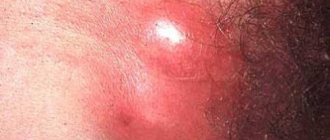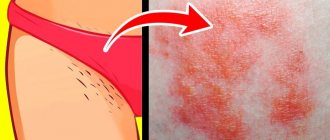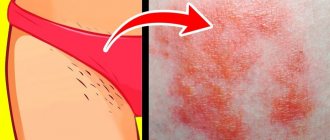Where did hyperhidrosis come from?
Sweating of the head occurs due to external and internal reasons. In a person with this symptom, it is worth studying:
- is he dressed for the weather (maybe he’s just hot);
- whether its actions are active (during physical activity there is a physiological increase in sweating;
- emotional state (during stress, sweating increases under the influence of neurotransmitters);
- Is your hair clean (sebum accumulates, creating a “greenhouse”);
- what material is the headdress made of (synthetics do not dissipate heat well and almost do not absorb sweat);
- Are there any styling products on the hair (if used frequently and poorly removed from the skin, they provoke increased sweating).
Read also: Headache in the forehead area
If there are no external causes, they move on to looking for problems from within. Factors that cause your head to sweat:
- prolonged stress;
- frequent drinking of alcohol;
- smoking a large number of cigarettes (more than 2 packs per day);
- increased anxiety;
- eating large amounts of spicy and fatty foods;
- hormonal disbalance;
- taking certain pharmacological drugs.
If none of the reasons apply, you should visit a doctor. Sometimes sweating of the head is a symptom of a serious pathology that requires treatment.
Causes of sweating head
Emotional turmoil
The symptom often develops in stressful situations, with fear. Patients prone to emotional lability report that severe sweating of the head and face occurs during public speaking, taking exams, and important interviews. Sweating can be so profuse that sweat runs down the skin in streams. The face and ears also become very red, and there is a disturbing feeling of heat and a rush of blood to the head. Such symptoms cause severe psychological discomfort, which is why patients try not to attract attention to themselves and avoid new acquaintances, which leads to social maladjustment.
Nightmares
Unpleasant dreams are common causes of scalp hyperhidrosis, especially in children. The patient sleeps restlessly at night, tosses about in bed, and screams. In this case, profuse sweating is observed, especially pronounced in the facial area and scalp: hair may become wet, and wet spots form on the pillowcase. After awakening, a person does not immediately become aware of the surrounding reality; for some time he is in a state of severe fright. If nightmares persist for several nights in a row and are accompanied by a fear of falling asleep, you should seek medical help.
Vegetative-vascular dystonia
Disturbances in the coordinated work of the sympathetic and parasympathetic parts of the nervous system increase the function of the sweat glands of the face, and increased sweating of the palms and armpits is also possible. Excessive sweating in the head area during VSD is provoked by various reasons: anxiety, eating spicy or too hot food, natural hormonal changes in women. Sweating begins suddenly, sweat appears in drops on the forehead or runs down the face, and the hair becomes wet. Such attacks are repeated up to several times a day.
Hypertensive crisis
A sudden increase in blood pressure is combined with dilation of the blood vessels of the scalp and face, which causes profuse sweating. According to the observations of patients, severe sweating occurs against a background of severe headaches and dizziness. Often there is a lot of noise in the ears, vision becomes blurred (“spots flash” before the eyes). In addition to the head, sweat is released and flows in droplets in the neck and upper torso. The skin in this area is red and hot to the touch. Such symptoms are more typical for the neurovegetative form of hypertensive crisis.
Cranial nerve damage
The development of increased sweating of the head may be associated with irritation of peripheral nerve endings. The most common is Lucy-Frey syndrome, which is caused by damage to the auriculotemporal nerve for various reasons (after mumps, sialadenitis, operations on the salivary gland). With this disorder, the head sweats heavily in the area of the ear and temple on one side, which often occurs after eating. The unreasonable appearance of beads of sweat on the chin is a sign of chorda tympani syndrome, which occurs after surgical trauma.
Neurological diseases
Excessive sweating of the head occurs in various brain pathologies that cause dysfunction of the sweat glands. In acute neurological problems, profuse sweating begins suddenly and is usually short-lived. In patients with chronic degenerative processes, the head sweats for a long time. Sweating may be accompanied by a decrease in memory and attention, speech disorders (long pauses between answers, incoherent speech), and temporary paresis of the limbs. Hyperhidrosis is caused by reasons such as:
- Parkinson's disease.
Sweating is a compensatory reaction to damage to the autonomic nervous system. In addition to increased sweat production in the area of the scalp and face, pathognomonic symptoms of the disease are noted: tremor of the fingers, gait disturbances, decreased memory, attention, and other cognitive functions. - Neurosyphilis.
Damage to the roots of the cranial nerves due to an infectious cause often leads to disruption of the normal functioning of the sweat glands, so patients have a profuse head sweat. In addition, debilitating headaches, dizziness, and tinnitus bother me. - Stroke.
Increased sweating occurs when the thermoregulation center in the hypothalamus is damaged. Characteristic feature: sweating is observed only on half of the head and neck (usually on the side of the muscle paresis). Speech and motor disturbances appear at the same time.
Traumatic brain injuries
After head injuries, severe sweating may occur, which is caused by damage to the nerve structures of the brain responsible for thermoregulation, or ruptures of the peripheral cranial nerves. The degree of disruption of the secretion of sweat glands depends on the cause of the TBI and the extent of the damage received. In addition to hyperhidrosis, painful headaches develop, accompanied by nausea and repeated vomiting, and loss of consciousness is possible. In severe injuries, local sweating gives way to cold sweat.
Complications of pharmacotherapy
The side effect usually occurs within minutes of rapid intravenous administration of nitrates, drugs used to treat stable angina and acute coronary syndrome. The appearance of severe hyperhidrosis in the face and head is preceded by a feeling of heat. Sweating is combined with severe redness of the skin. Headaches and dizziness are typical, and when suddenly getting out of bed, a pre-fainting state is observed. The presence of such disorders should be reported to your doctor in order to adjust the dosage of the drug.
Rare causes
- Essential local hyperhidrosis
. - Gustatory hyperhidrosis
: symmetrical sweating due to the trigeminovascular reflex. - Dermatological diseases
: organoid or diaphoretic nevus, exocrine hair angiomatous hamartoma, glomus tumors. - Hereditary diseases
: Hamstorp-Wohlfahrt syndrome, congenital dyskeratosis (Zinsser-Engman-Cole syndrome).
What could it be
Patients with certain diseases experience severe sweating due to disturbances occurring in the body. This symptom is characteristic of several conditions:
- oncological diseases;
- pathologies of the endocrine system;
- infectious diseases (ARVI, acute respiratory infections);
- pathologies of the cardiovascular system;
- diseases of the nervous system;
- obesity.
When a child's head sweats, the cause may be rickets. It is worth contacting your pediatrician with this question, who will prescribe examination and treatment. This pathology is not typical for adults.
Read also: Headaches in the temple area
Clinical researches
Clinical studies have proven the effectiveness, safety and tolerability of the products. The products are suitable for daily care of children's skin with mild to moderate forms of atopic dermatitis and during remission, accompanied by a decrease in the quality of life of patients.
Based on the results of clinical studies, the product packaging contains information that the creams are recommended by the St. Petersburg branch of the Union of Pediatricians of Russia.
Sources:
- Molochkova Yulia Vladimirovna, Dermatology. Brief reference book, GEOTAR-Media, 2022.
- Baumann Leslie, Cosmetic Dermatology. Principles and practice, MEDpress-inform, 2016.
- Ratner Desiri, Avram M.R., Avram M.M., Procedures in Dermatology. Clinical cosmetology, GEOTAR-Media, 2022.
Diagnostics
Scalp hyperhidrosis can be diagnosed based on examination and patient complaints. The doctor then develops an examination plan to find and treat the cause of the condition. Diagnostic measures for hyperhidrosis:
- taking anamnesis;
- biochemical blood test (glucose, creatinine, urea);
- determination of thyroid hormone levels;
- ECG, ultrasound of the heart;
- Ultrasound of the thyroid gland;
- MRI, CT (if a tumor process is suspected).
A comprehensive examination allows you to establish the cause of hyperhidrosis of the scalp and prescribe adequate therapy. To do this, the patient must be referred to a specialized specialist.
Botox for the treatment of hyperhidrosis of the head and face
The Botox injection procedure in our clinic is performed by experienced cosmetologists. This procedure does not require special preparation; it is only important that there are no areas of inflammation on the face, neck or under the hair.
The doctor makes several injections in the areas of the most severe sweating of the head or neck: the needle of the syringe is so thin that the procedure does not even require additional anesthesia, the patient experiences virtually no discomfort. Immediately after the procedure, you can return to your normal lifestyle; no additional rehabilitation is required.
The pronounced effect of Botox injections will be noticeable already on the 3-4th day and will last up to 8 months, then the procedure will need to be repeated.
Treatment
There are several methods to get rid of hyperhidrosis. If the condition occurs as a symptom of a serious illness, treatment should be aimed at eliminating the cause. These include hormonal and chemotherapy, heart medications, and medications that affect the nervous system.
Symptomatic treatment for sweating of the head is carried out in private clinics. Procedures for getting rid of hyperhidrosis:
- injections of botulinum toxin into the armpits (effect from 6 to 12 months);
- sympathectomy - destruction of nerve cells that transmit signals to the brain about sweat secretion (valid for life).
Symptomatic treatment of sweating of the head is a solution for those for whom it is simply a feature of the body’s functioning. But if hyperhidrosis appears as a consequence of a disease, the cause needs to be treated, and the consequences will go away on their own.
Dear patients!
Remember that only a qualified doctor can make an accurate diagnosis, determine the causes and nature of the disease, and prescribe effective treatment. You can make an appointment with our specialists or call a doctor at home by calling 8-(4822)-33-00-33 Be healthy and happy!
Hyperhidrosis: symptoms, causes, treatment of excessive sweating in men and women at the MEDSI Clinic
Table of contents
- Types of pathology
- Causes of hyperhidrosis
- Symptoms and diagnosis of hyperhidrosis
- Treatment of hyperhidrosis
- Prevention
- Advantages of treatment at MEDSI
Hyperhidrosis is a pathology that is accompanied by increased sweating throughout the body or in certain areas of it.
Local forms of the pathological condition are more common. With such hyperhidrosis, increased sweating occurs mainly in the area of the palms and feet, in the armpits and large folds of the skin. The symptoms of the pathology are not just unpleasant from a physical point of view, but also cause severe emotional discomfort. Often, patients with hyperhidrosis significantly limit themselves in communication, refuse public speaking, and often do not even shake hands when meeting acquaintances, as they are embarrassed by their constantly wet palms. In fact, the problem can be easily fixed. You just need to turn to professionals! Treatment of profuse sweating is carried out quickly and without significant discomfort for the patient.
Types of pathology
Excessive sweating may be common. In this case, sweating is observed over the entire surface of the body and is often a companion to functional disorders in the endocrine or nervous system, as well as a number of infectious diseases.
Local hyperhidrosis is also distinguished.
Depending on the location of manifestation, the following forms of such increased sweating are distinguished:
- Axillary hyperhidrosis
- Palmar
- Plantar
- Facial
- Inguinal-perineal
Hyperhidrosis can also be:
- Seasonal
- manifests itself only in the warm season - Constant
- occurring regardless of air temperature - Intermittent
. This pathology is characterized by alternating exacerbations and remissions.
Hyperhidrosis causes significant discomfort and reduces quality of life. Knowing about his problem, a person is constantly in tension. Nervous anticipation provokes even more pronounced sweating. The circle closes, and the patient often does not see a way out of it.
Causes of hyperhidrosis
It should be understood that sweat separation is a physiological process.
Thanks to it, we provide:
- Removal of excess liquid
- Mechanism of thermoregulation (body cooling)
- Protecting the skin from various rashes due to exposure to aggressive environmental factors
Sweating is normal when the air or body temperature is elevated.
But if, even in a calm and healthy state, in a cool room you begin to actively sweat, it means that something is going wrong in the body.
Hyperhidrosis often accompanies diseases such as:
- Pathologies of the nervous system
- Infectious diseases
- Endocrine disorders
- Chronic intoxication due to alcoholism, smoking and drug addiction
Increased sweating can also be caused by factors such as:
- Poor personal hygiene
- Constantly wearing synthetic items
- Clothing too warm
Unfortunately, some people neglect treatment and this leads to a decrease in quality of life. In fact, it’s enough just to contact a specialist. The doctor will be able to fix the problem.
Symptoms and diagnosis of hyperhidrosis
Treatment of excessive sweating should be carried out if you are constantly accompanied by signs of hyperhidrosis.
The cause of the pathology is often determined visually by the doctor already at the first appointment. Hyperhidrosis provoked by psychogenic factors is especially pronounced. An appointment with a doctor is a stressful factor, so the patient often sweats a lot during the consultation. The doctor immediately sees the problem and determines the type and variety of pathology.
A number of diagnostic methods are also used to identify hyperhidrosis.
Among them:
- Iodine-starch test
. It consists of applying an iodine solution to individual areas of the body, sprinkling starch on the spots and observing. When sweat appears, iodine reacts. The doctor discovers black spots on the body - Gravimetry
. As a result of the diagnosis, the presence of increased sweating and the average amount of sweat produced are determined. The test involves drying the surface of the skin using filter paper. The paper is then weighed. Sweating rate is expressed in mg/min - Chromatographic method
. This study allows us to determine the content of unsaturated fatty acids in sweat. A sweat sample is taken for analysis. It is studied in a laboratory using modern equipment. Diagnostics is carried out in order to make an accurate diagnosis and develop appropriate treatment tactics
Diagnostics includes the following laboratory and instrumental studies:
- General blood analysis
- Blood sugar test
- Analysis of urine
- X-ray of the skull
- CT head
- Cardiography
To fully evaluate the patient, other tests may be prescribed. The need for a comprehensive diagnosis is due to the fact that excessive sweating, which must be treated in most cases, can only become a sign of disturbances in the functioning of the cardiovascular, nervous and other systems.
Treatment of hyperhidrosis
Non-surgical treatment for sweating
Excessive sweating, which is treated without surgery, is usually caused by a psychological factor. Various drugs are used for therapy. They are selected only by a specialist! Special medical antiperspirants are also commonly used. They are relevant for the feet, hands, armpits and even the face. These products differ from standard cosmetic products in their high content of active substances.
Excessive sweating is also treated using iontophoresis. Ionizing substances and currents can literally “turn off” the sweat glands. Unfortunately, iontophoresis has a number of contraindications. The procedure is not carried out if:
- Pregnancy
- Epilepsy
- Pathologies of the cardiovascular system
- Availability of pacemakers, etc.
Invasive treatment for sweating
Botulinum toxin is actively used for therapy today. The administration of the drug allows you to stop sweating in certain areas of the body. The technique is especially effective for axillary hyperhidrosis. Botulinum toxin injections are not performed if:
- Bleeding disorders
- Acute infections
- Inflammatory processes
- Pregnancy, etc.
The causes of excessive sweating are also treated using curettage techniques. The method is surgical and involves destroying the sweat glands using a curette (an instrument for scraping out soft tissue). The procedure is performed under local anesthesia and requires incisions. Usually the incision is small (about 1 cm). The instrument is inserted through it. The curette is connected to a vacuum pump, which removes tissue. The effect after curettage lasts up to six months. This is due to the fact that new sweat glands can form in the body. You should resort to the procedure only if other methods do not give the desired result. Curettage is an operation that can cause sensory impairment due to damage to nerve fibers.
Modern methods of treating sweating also include laser exposure. With its help, the destruction of sweat glands is ensured. The procedure also involves making small incisions through which a light guide is inserted under the skin. Recovery after the intervention takes less time than after traditional curettage.
There are a number of other treatment methods.
When selecting them, specialists always focus on:
- General condition of the patient
- Cause of pathology
- Its shape and appearance
- Symptoms of hyperhidrosis
Prevention
When preventing excessive sweating, you should take into account the factors that provoke it and eliminate them.
To reduce the risk of hyperhidrosis you should:
- Carefully follow the rules of hygiene
. It is important to shower regularly and use safe detergents with a minimum amount of fragrances, stabilizers and other aggressive substances - Quit smoking and drinking alcohol
- Stick to proper nutrition
. If you are predisposed to excessive sweating, avoid fatty, fried, smoked and salty foods - Choose the right clothes and shoes
. Buy loose items made from natural fabrics - Take vitamin complexes
- Use antiperspirants
- Try to reduce stressors
Advantages of treatment at MEDSI
- Experienced specialists
. Our doctors carry out comprehensive diagnostics, allowing us to detect the causes of excessive sweating and quickly treat the pathology. - Individual therapy plan
. Treatment of any patient is always carried out taking into account his characteristics, concomitant diseases and identified causes of pathology - Use of modern methods of therapy
. One of them is the injection of botulinum toxin - Comfortable atmosphere in clinics
. We try to relieve our patients as much as possible from exposure to any stress factors. - No queues
. You don't have to wait long for an appointment or worry - Treatment of the patient with the involvement of several specialists
To use the help of experienced specialists, just call +7 (495) 7-800-500.











